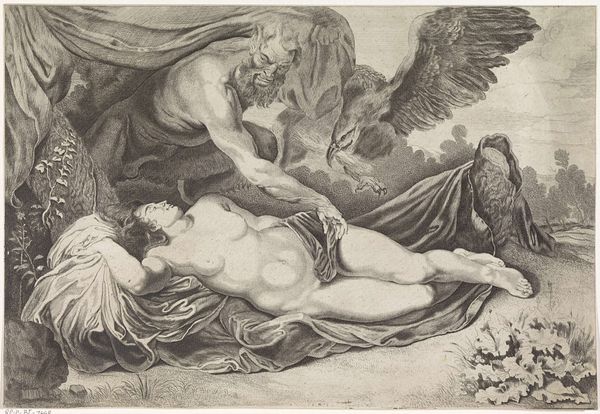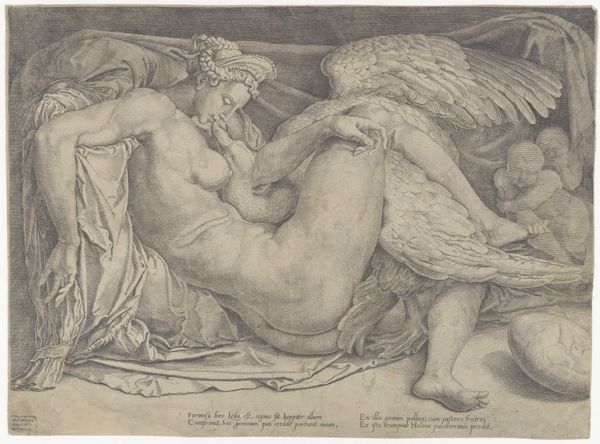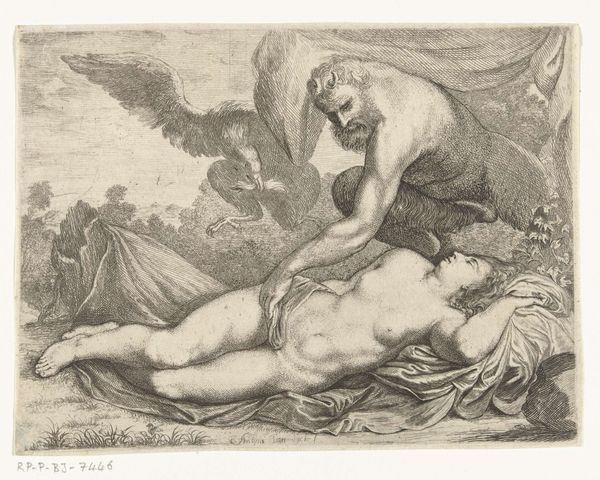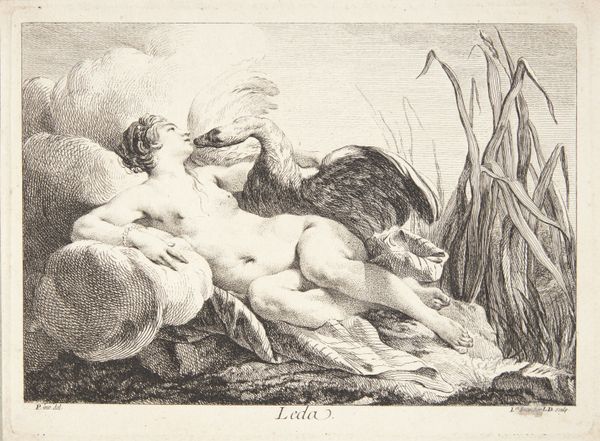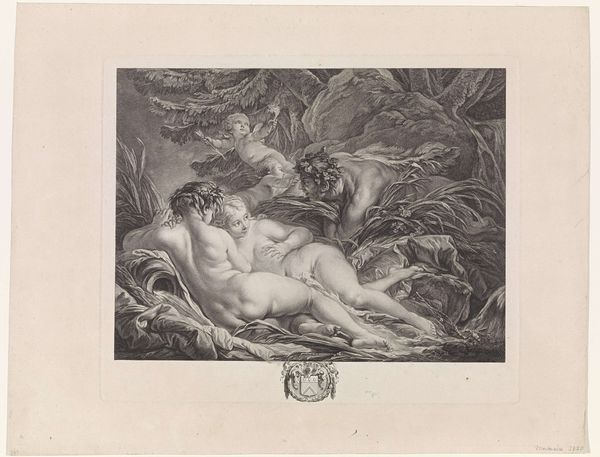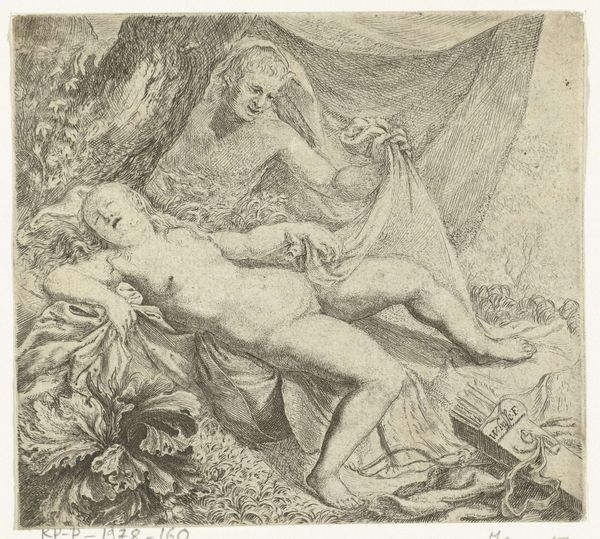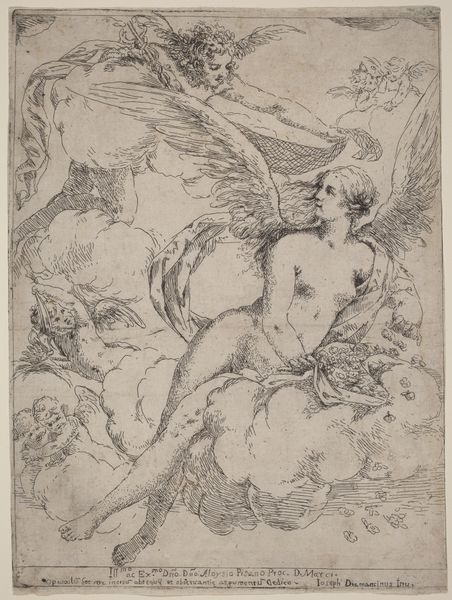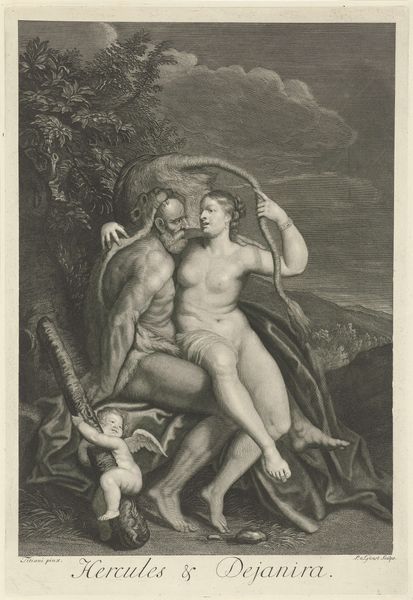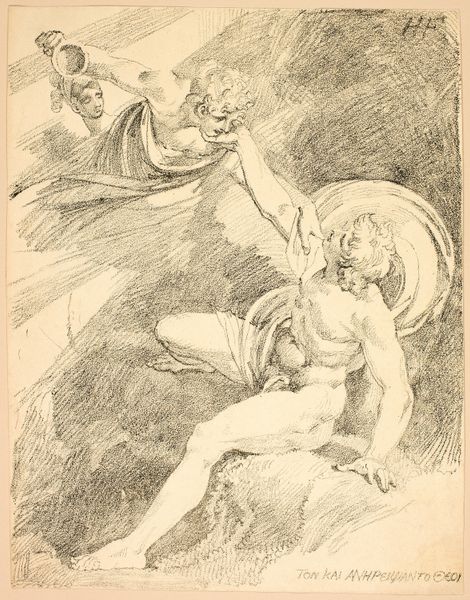
drawing, print, paper, ink, engraving
#
drawing
#
allegory
#
baroque
# print
#
pencil sketch
#
charcoal drawing
#
paper
#
charcoal art
#
ink
#
pencil drawing
#
surrealism
#
mythology
#
history-painting
#
nude
#
engraving
Dimensions: height 252 mm, width 350 mm
Copyright: Rijks Museum: Open Domain
Curator: This print, entitled "Jupiter en Antiope," dates back to after 1615 and is currently held here at the Rijksmuseum. The work, realized in engraving, ink and paper, is attributed to Pieter van Sompel after van Dyck. Visually, what’s your immediate response to it? Editor: The atmosphere is undeniably heavy and sexually charged. The dark rendering of the trees seems to conspire to imprison Antiope on the ground while she is faced with the brute force of the God above her. The lines feel very assertive. It’s…imposing, visually and conceptually. Curator: Yes, that weight resonates with the historical context, doesn't it? Representations of mythological rapes were common. Yet they carry a distinct significance, reflecting and reinforcing existing power structures. Who had access and freedom of their own body. Van Sompel reproduces after van Dyck to speak about it. Editor: Absolutely, and beyond the dynamics of power, I'm struck by how this composition draws from a well-established visual vocabulary. Jupiter's eagle, for example, isn’t just a bird, it embodies imperial power and divine authority but most importantly male aggression and dominance. That link is so critical to understanding the work as a cultural artifact. Curator: Considering Antiope's positioning, too—nude, supine, vulnerable. She serves to represent the female body, specifically conceived for the satisfaction of patriarchal authority which in this instance are represented by male and God's physical and militaristic force. Editor: I notice how the drapes wrap around the character, but it doesn't manage to save Antiope's shame or sexual concession; or perhaps rather, her acceptance. I wonder whether there is a psychological element here in which she would see him as God himself. Curator: That element of presumed "consent" requires an analytical approach when understanding the imagery. I mean, we might decode and understand the relationship depicted on many levels, with one level perhaps revealing male God given authority above female earth giving subjects. Editor: I do wonder, looking at it now, about the degree to which it invites empathy versus voyeurism. The subject of this "sleeping beauty" here is questionable! But I recognize your approach encourages us to critique this paradigm that persists today in visual culture. Curator: Precisely. To examine it not as an isolated artistic creation, but as a component of a much broader conversation about power, representation, and the often-troubled history of gender dynamics. Editor: Thinking of Jupiter, this image has shifted my perceptions of the significance behind Zeus-Jupiter depiction and I can never consider the symbolic importance of birds in quite the same manner!
Comments
No comments
Be the first to comment and join the conversation on the ultimate creative platform.
